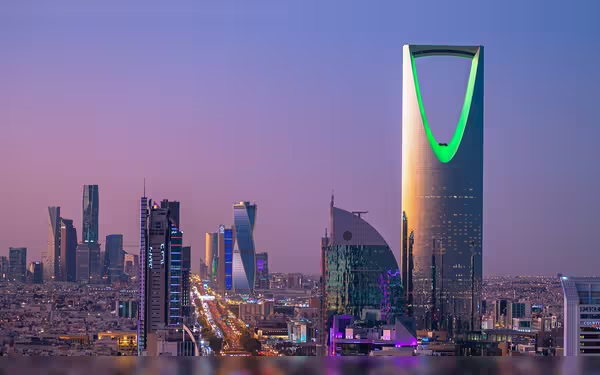Saturday, November 16, 2024 05:27 PM
Saudi Banking Sector Growth Driven by Economic Diversification
- Saudi banks report 23% profit increase in July.
- Diversification initiatives boost lending in construction and tourism.
- Moody's forecasts 5.5% GDP growth in non-hydrocarbon sectors.
 Image Credits: arabnewspk
Image Credits: arabnewspkMoody's report highlights Saudi banking sector growth driven by diversification, with a 23% profit increase and strong GDP forecasts.
Saudi Arabia is undergoing a significant transformation as it strives to diversify its economy away from its traditional reliance on oil revenues. This shift is not just a government initiative; it is also having a profound impact on the banking sector. According to a recent report by Moody's, a prominent US-based credit rating agency, the growth of Saudi Arabia's banking sector is being accelerated by these diversification efforts. Industries such as construction and tourism are emerging as attractive areas for lending, providing banks with new opportunities to expand their portfolios.
The report highlights that the performance of the banking sector's loan portfolio has shown continuous improvement, particularly following the implementation of the Kingdom's national diversification agenda. This agenda aims to reduce the economy's dependence on hydrocarbon revenue, which has historically been the backbone of Saudi Arabia's financial landscape. The Saudi Central Bank, known as SAMA, reported that the aggregate profit before zakat and tax of banks operating in the Kingdom reached an impressive SR7.83 billion (approximately $2.1 billion) in July, marking a remarkable 23 percent increase compared to the previous year.
Lea Hanna, an analyst at Moody's, expressed optimism about the future, stating, "We expect this trend to persist over the coming 12 to 18 months, further boosting the non-hydrocarbon economy where banks largely operate." This positive outlook is bolstered by government policies and reforms that support Saudi borrowers' repayment capacity. Additionally, banks are experiencing lower delinquencies in their loan portfolios, with provisions fully covering nonperforming loans.
Moody's forecasts that Saudi Arabia's real non-hydrocarbon gross domestic product (GDP) will grow robustly, by approximately 5.5 percent in both 2024 and 2025. This growth is expected to be driven by substantial government investments in large infrastructure projects, which will, in turn, increase the demand for credit during these years. The report emphasizes that sectors such as construction, tourism, and entertainment will play a crucial role in shaping the growth of Saudi banks' loan books.
While the contribution of mega projects like the Red Sea and Qiddiyah remains significant, the diversification into new sectors such as tourism, entertainment, and renewable energy presents attractive lending opportunities for banks. Furthermore, lending to small and medium enterprises (SMEs) in Saudi Arabia has seen an increase, although it still constitutes a small fraction of the overall sector loan book.
However, Moody's also cautions about potential risks that could affect the asset quality of banks. These risks include a prolonged period of low oil prices and possible changes in government policy. Hanna noted, "They (banks in Saudi Arabia) remain exposed to downside risks should there be a reversal in economic momentum or a relaxation in authorities' active support in managing system asset risks."
In July, another report from Moody's indicated that Saudi banks are likely to see their client base expand due to government-backed economic diversification efforts that promote innovation and boost productivity in the Kingdom. The analysis also pointed out that Saudi Arabia and Oman were the top two Gulf Cooperation Council (GCC) countries with the lowest volatility in non-oil sector expansion from 2020 to 2023.
The ongoing diversification initiatives in Saudi Arabia are not only reshaping the economy but also providing a solid foundation for the growth of the banking sector. As the Kingdom continues to invest in various industries, the banking sector is poised to benefit significantly. This transformation presents a unique opportunity for both banks and borrowers, fostering a more resilient and diversified economic landscape in Saudi Arabia.













